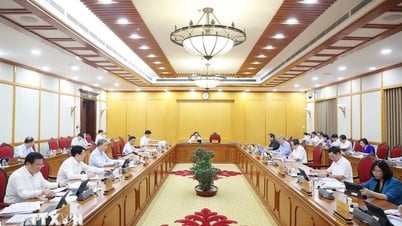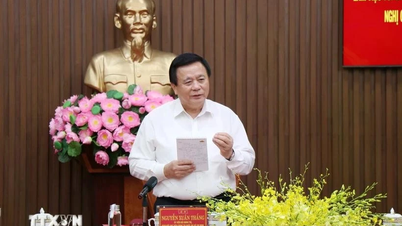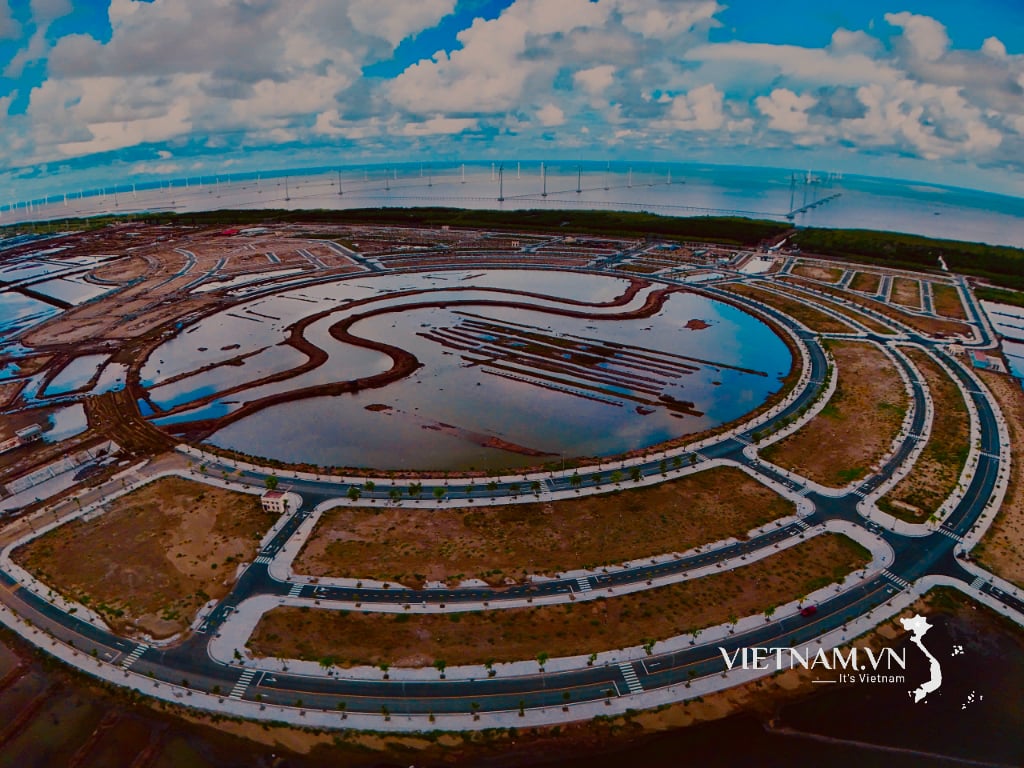Delegate Ma Thi Thuy spoke during the discussion.
Participating in the discussion, comrade Ma Thi Thuy, Deputy Head of the Provincial Delegation of National Assembly Deputies, agreed with the contents of the Government 's Submission and the Social Committee's review of the National Target Program on Drug Prevention and Control to 2030.
In order for the Program to be effectively implemented, delegates suggested that the Government pay attention to overcoming the limitations and shortcomings and lessons learned from the three current National Target Programs and the National Target Program on Drug Prevention and Control in previous stages. At the same time, it is necessary to determine the objectives and tasks, with focus and key points, clarify the contents that need to be prioritized and urgently implemented first. In addition, it is necessary to focus on forecasting, evaluating thoroughly, with feasibility and sustainability of drug prevention and control goals. In organizing implementation, it is necessary to clearly assign responsibilities to people, tasks, progress, time and results of each agency and unit.
Regarding specific projects of the Program, especially Project 05 on improving the effectiveness of drug addiction treatment and post-treatment management (a project chaired by the Ministry of Labor, War Invalids and Social Affairs, with a total capital of over 11 trillion VND, accounting for about 51% of the total capital of the Program), delegates proposed and made recommendations on a number of issues:
Firstly, there are two drug addiction treatment measures stipulated in the Law on Drug Prevention and Control, which are voluntary drug addiction treatment at home and in the community and compulsory drug addiction treatment. However, the effectiveness of drug addiction treatment at home and in the community is still unclear, only mentioning the arrangement of upgrading, repairing and supplementing equipment for 200 units providing drug addiction treatment services at home and in the community, 70% of the provinces organizing drug addiction treatment at home and in the community are unclear about the goals and solutions.
According to the report of the specialized agency implementing since the Law on Drug Prevention and Control, this result is showing at a low level. In 2023, only 27 localities organized drug rehabilitation for 4,275 people (accounting for 2.5% of the total number of drug addicts with management records) and so far, the whole country has only 36 provinces, accounting for 57.1% of the provinces qualified to provide drug rehabilitation services at home and in the community. According to Report No. 2680 of the Ministry of Public Security , there are currently only 51 provinces, including 90 districts and 208 communes with community drug rehabilitation points, so it is necessary to pay attention to supplementing the content objectives of this drug rehabilitation measure and have effective solutions to improve the effectiveness of this project, especially promptly removing the shortcomings in voluntary drug rehabilitation work at home and in the community at present.
Second, the project name is Improving the effectiveness of drug addiction treatment and post-rehabilitation management. The project mentions occupational therapy at drug addiction treatment facilities, which is also one of the steps in the drug addiction treatment process as prescribed by the Law on Drug Prevention and Control. However, the post-rehabilitation management work is not really clear, and it is not clear which agency plays the key role at the grassroots level.
According to reports from relevant agencies, there are currently only 17,586 post-rehabilitation managers out of a total of over 42,000 people reintegrated into the community, of which 51.36% are supported in finding jobs. To improve the effectiveness of post-rehabilitation as the project's name suggests, delegates proposed adding indicators on consulting management, meetings, propaganda, and job referrals for post-rehabilitation people, minimizing the risk of relapse.
Third, regarding investment in facilities of drug rehabilitation facilities: The goal is to "strive for 100% of public rehabilitation facilities to ensure facilities and equipment according to the provisions of the Law on Drug Prevention and Control", resources are allocated to build 3 new facilities, support upgrading and repairing facilities and equipment for 24 provinces; and some localities still have budget difficulties, thereby showing that the project has not clearly identified the quantity and status of facilities, so it will be difficult to allocate capital. Regarding this issue, delegates suggested that special attention should be paid to reviewing and correctly assessing the current situation and having a plan to allocate appropriate resources, avoiding scattered investment that does not promote the effectiveness that the project brings.
In addition, the delegate said that the counterpart fund for the Program from the local budget of about 20% is still too high, especially for localities with difficult socio-economic conditions in mountainous and ethnic minority areas. While the current 3 national target programs have a counterpart rate of only about 5%. To make the Program implementation more feasible, the delegate suggested that the Government should allocate appropriate resources, especially for mountainous and ethnic minority provinces that still have many budget difficulties.
According to Tuyen Quang Newspaper
Source: http://tuyenquang.gov.vn/vi/post/pho-truong-doan-dbqh-chuyen-trach-tinh-ma-thi-thuy-can-co-giai-phap-han-che-thap-nhat-tinh-trang-tai-nghien-ma-tuy?type=NEWS&id=131187

























































































![[OCOP REVIEW] Tu Duyen Syrup - The essence of herbs from the mountains and forests of Nhu Thanh](https://vphoto.vietnam.vn/thumb/402x226/vietnam/resource/IMAGE/2025/6/5/58ca32fce4ec44039e444fbfae7e75ec)






Comment (0)